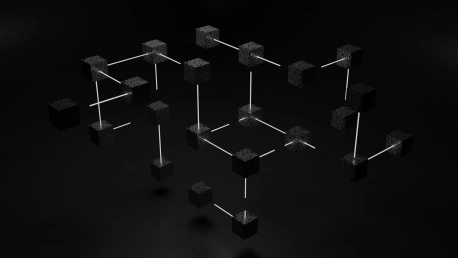Blockchain technology is undergoing significant transformations that are setting the stage for its next growth phase, with a particular emphasis on enhanced scalability, security, and user adoption. As the industry matures, the shift from horizontal to vertical scaling, the emergence of sophisticated alternatives to wrapped assets, and the simplification of blockchain processes are all poised to redefine how this technology is utilized and perceived.
Blockchain Scaling
Recent strides in blockchain scalability have yielded remarkable results, with solutions like Ethereum layer-2 protocols such as Arbitrum and Optimism, as well as innovative consensus mechanisms from platforms like Solana, Near, and Aptos, making transactions faster and more affordable. However, Chris Li, founder and CTO of Ava Protocol, predicts that over the next five years, the focus will likely transition from horizontal scaling—where the primary goal is to increase transaction capacity—to vertical scaling, which aims to enhance transaction capabilities. This shift promises to not only speed up transactions and make them more cost-effective but also expand what transactions can actually do through advancements like smart wallets and multi-signature solutions.
Wrapped Assets
Wrapped assets have garnered attention as transitional tools that facilitate cross-chain transactions by holding assets in custody under smart contracts. Despite their current usefulness, these solutions reintroduce centralization risks and create trust dependencies, which stand in stark contrast to the decentralized ideals of blockchain technology. The blockchain community is increasingly looking toward emerging solutions like atomic swaps, cross-chain bridges, and zero-knowledge proofs. These alternatives are touted as promising replacements that maintain the decentralized and trustless nature of blockchain while offering similar functionalities.
Blockchain Simplification for User Adoption
One of the major hurdles to widespread blockchain adoption remains its complexity. While developers have made significant strides in streamlining blockchain processes, average users still face a steep learning curve. Efforts to enhance user experience are underway, with smart wallets that comply with standards like ERC-4337 and ERC-6900 at the forefront. These smart wallets are designed to simplify the management of user accounts and facilitate interactions with Web2 authentication methods, thereby making it easier for non-technical users to engage with blockchain technology without compromising on security.
Blockchain Trilemma
The blockchain trilemma, which involves balancing decentralization, security, and scalability, continues to be a significant challenge for developers. However, innovative approaches are being developed to navigate this trilemma more effectively. Ava Protocol’s use of additional computational and storage resources through EigenLayer’s network is one such example. This method aims for cost-effectiveness while enhancing transaction functionalities, offering a potential pathway to achieving the delicate balance required for a robust blockchain ecosystem.
Overarching Trends and Consensus Viewpoints
Industry experts generally agree that a shift towards vertical scaling is likely, placing more emphasis on enhancing transaction capabilities rather than merely increasing transaction volume. Wrapped assets, while currently useful, are expected to be replaced by more advanced, decentralized solutions such as atomic swaps and zero-knowledge proofs, which mitigate centralization risks. Simplifying blockchain processes is universally acknowledged as critical for mass adoption, with smart wallets and similar innovations playing a pivotal role. Additionally, innovative methods to address the blockchain trilemma are continually being explored, as illustrated by Ava Protocol’s resourceful use of EigenLayer.
Synthesis and Narrative
The ongoing and forthcoming developments in blockchain technology suggest an industry at a crucial juncture, poised for significant advancements. Moving from horizontal to vertical scaling signals a new phase of growth, focusing not just on managing a higher volume of transactions but also on enabling more powerful and user-friendly transactions. This evolution is set to redefine the blockchain landscape, making it more accessible and functional while maintaining its core principles of security and decentralization.
Main Findings
Current progress in blockchain technology is impressive, but the journey toward achieving widespread adoption and optimal performance is still ongoing. Wrapped assets are gradually being superseded by superior decentralized alternatives. The simplification of blockchain interactions remains imperative to attract and retain everyday users. Moreover, creative solutions to the blockchain trilemma are being actively pursued, with innovative resource allocations playing a crucial role.
Conclusion
Blockchain technology is experiencing transformative developments that are paving the way for the next phase of its evolution, focusing significantly on improved scalability, security, and user adoption. As the industry matures, we’re witnessing a shift from horizontal to vertical scaling—a move that promises greater efficiency and performance. Additionally, the rise of sophisticated alternatives to wrapped assets is expanding the possibilities of how blockchain can be used, enhancing both functionality and security.The simplification of blockchain processes is another major factor driving its growing adoption. By making blockchain more user-friendly, these advancements are lowering barriers to entry and enabling a broader range of users and businesses to leverage its potential. This democratization of blockchain technology is instrumental in fostering a more inclusive and robust ecosystem.For blockchain to reach its full potential, a balanced approach to scalability, security, and usability is essential. As these elements advance in tandem, blockchain is poised to revolutionize various sectors, from finance to supply chain management, by offering unprecedented levels of transparency, efficiency, and trust.









